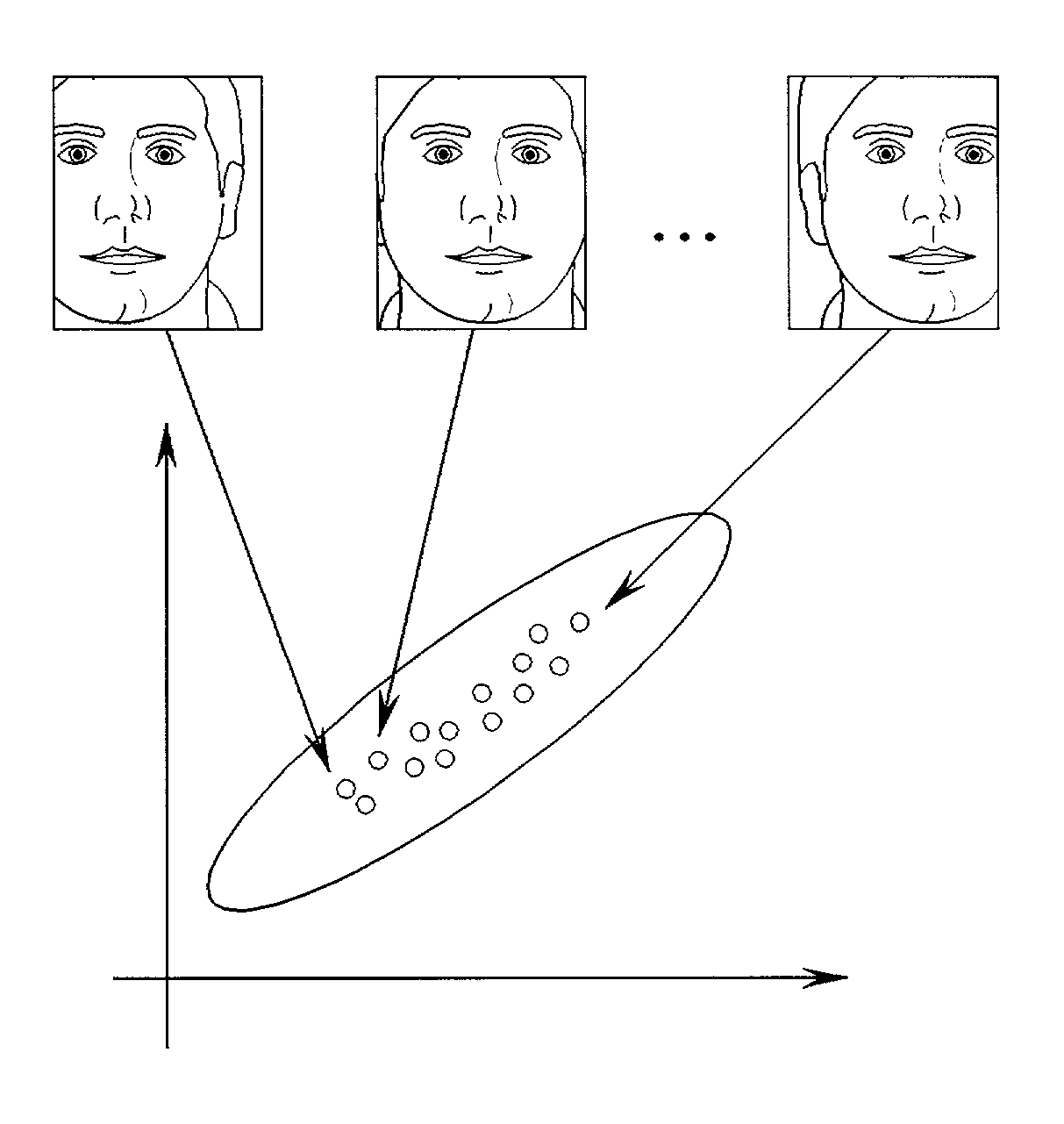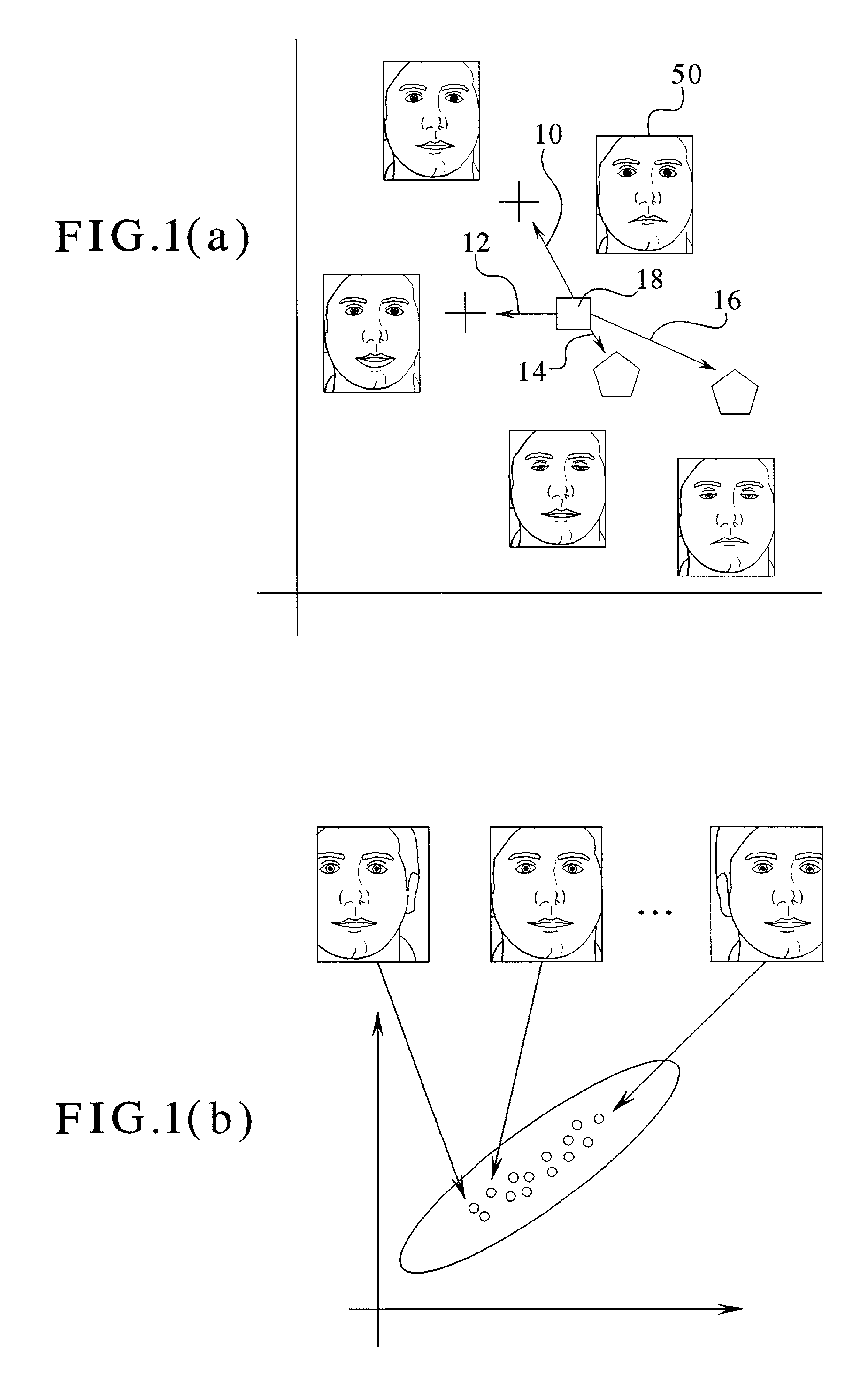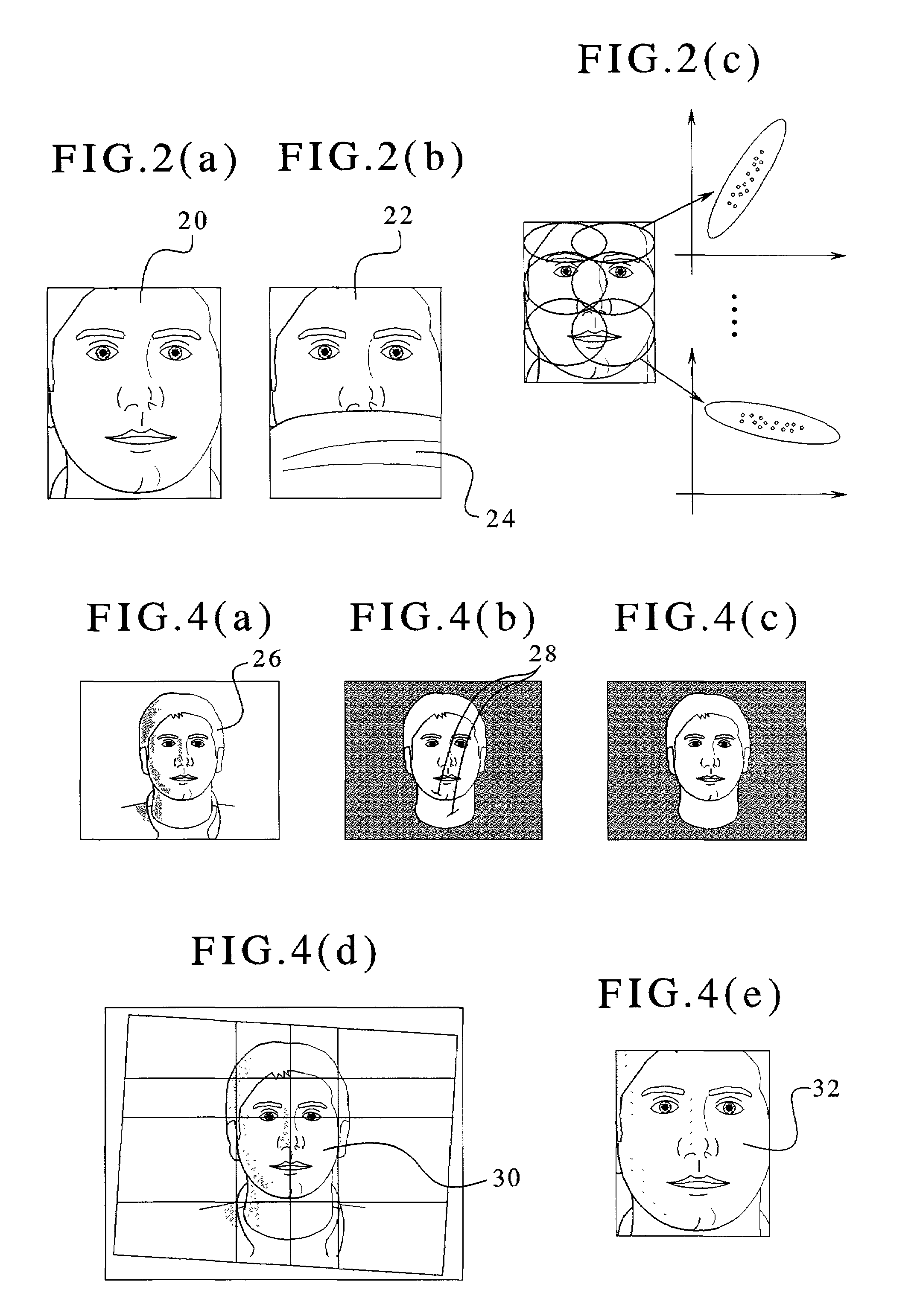Method of recognizing partially occluded and/or imprecisely localized faces
a face recognition and partially occluded technology, applied in the field of computer vision, can solve the problems of inability to identify in known face recognition approaches, many problems to be solved, and inability to accurately locate faces, etc., and achieve the effect of improving face recognition
- Summary
- Abstract
- Description
- Claims
- Application Information
AI Technical Summary
Benefits of technology
Problems solved by technology
Method used
Image
Examples
Embodiment Construction
[0029]As discussed above, there is provided a method and device for recognition of imprecisely localized and / or partially occluded faces.
[0030]The localization error problem is encountered when a small localization error makes the eigenspace representation of a test image close to an incorrect class. This is depicted in FIG. 1(a). FIG. 1(a) illustrates two classes, one drawn using crosses and another using pentagons. For each class, there are two learned feature vectors 10, 12, 14, 16, each corresponding to the same image but accounting for different localization errors. The test image 18 (which belongs to the “cross” class) is shown as a square. Note that while one of the “pentagon” samples 16 is far from the test feature vector, i.e. the square, the other 14 corresponds to the closest sample, i.e. while there is a localization that leads one to a correct classification, the other does not. This point becomes critical when the learning and testing images differ on facial expression...
PUM
 Login to View More
Login to View More Abstract
Description
Claims
Application Information
 Login to View More
Login to View More - R&D
- Intellectual Property
- Life Sciences
- Materials
- Tech Scout
- Unparalleled Data Quality
- Higher Quality Content
- 60% Fewer Hallucinations
Browse by: Latest US Patents, China's latest patents, Technical Efficacy Thesaurus, Application Domain, Technology Topic, Popular Technical Reports.
© 2025 PatSnap. All rights reserved.Legal|Privacy policy|Modern Slavery Act Transparency Statement|Sitemap|About US| Contact US: help@patsnap.com



